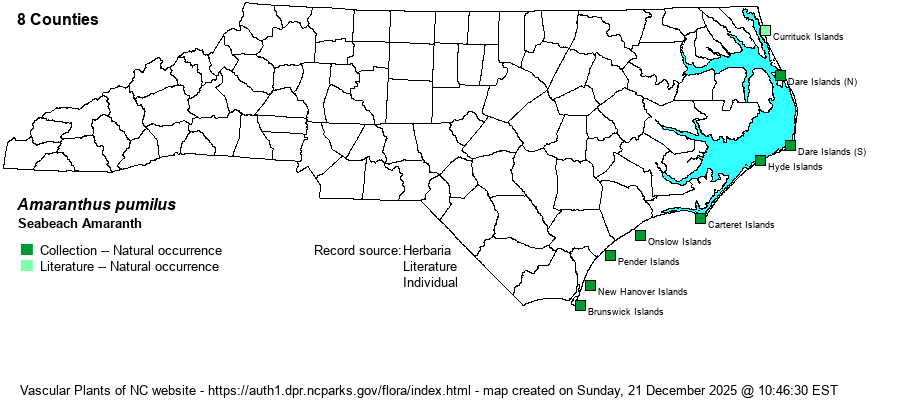| Author | Rafinesque | |
| Distribution | Outer Banks and other barrier islands/beaches only. One of our most "maritime" plants.
Maritime -- southeastern MA to southeastern SC. | |
| Abundance | Rare, but as it is an annual species, populations are variable from year to year depending on beach contour, extent of sand accretion, and disturbance by vehicles and storms. Plants tend not to occupy "stable" beaches. It is listed as Federally Threatened. Though the NCNHP database has numerous records, from all 8 coastal counties, numbers of individuals in some years -- there are censuses almost annually -- are precariously low (far below 100 individuals). Note that in some years, most of the entire population of the species resides on the NC beaches. | |
| Habitat | Upper margin of ocean beaches, sand spits, rarely on soundside beaches. May occur with the equally rare Polygonum glaucum in the wrackline. |
| Phenology | Flowering and fruiting July - November. | |
| Identification | Seabeach Amaranth is a low-growing, spreading plant with rather succulent, reddish stems and thick and succulent kidney-shaped to roundish leaves (the size of a fingernail) on long stalks. Plants grow in bare beach sand and project only a few inches above. No other beach plant looks like it, but it is easy to walk past a single plant owing to its very low profile. However, upon a close view, it has a form like a tiny "bonzai" shrub! | |
| Taxonomic Comments | None
| |
| Other Common Name(s) | Seaside Amaranth | |
| State Rank | S1 | |
| Global Rank | G2 | |
| State Status | T | |
| US Status | LT | |
| USACE-agcp | FACW link |
| USACE-emp | FACW link |

